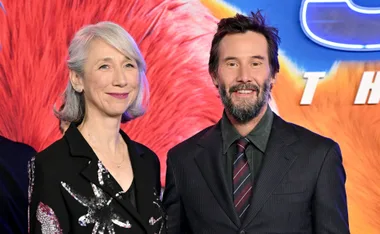For around $35 make this white magic crochet top.
FRONT
Work as for Back until there are 16 (17, 18, 19) rows less than Back, thus working last row on wrong side. Shape neck. Next row. Patt 44 (48, 53, 58), Dec A, turn.
Cont in patt on these 45 (49, 64, 59) sts and dec at neck edge (as before) in every row until 32 (35, 39, 43**) sts rem,
Work 2 rows. Fasten off **
Miss next st (centre st), join yarn to rem 46 (50, 55, 60) sts Dec A, patt to end. Rep from to .
SLEEVES
Using 3.50mm hook, make 46(46, 48, 48), ch.
1st row. Miss 1 ch, 7. do. in each ch to end. 1
2nd row. 1ch. 1dc in each do to end … 45 (45, 47, 47) dc. Rep 2nd row twice,
Change to 4.00mm hook and beg patt.
1st row. (1dc 1ch) in first dc, l ch, miss 1dc 1tr in next dc, rep from to end.
2nd row. (1dc, 1ch) in first tr, 1tr in next, ch sp, 1ch, 1tr in next ch sp, rep from * to turning ch, 1tr in top of turning ch.
3rd row. (1dc, 1ch, 1tr) in first tr, 1ch, 1tr in next ch sp, rep from to end, working 2tr in top of turning ch … 47 (47, 49, 49) sts.
Cont in patt as for Back and working extra sts into patt, inc one tr at each end of every row until there are 63
(71, 77, 85) sts, then in alt rows until there are 82 (87, 91, 95) sts. Cont in patt until work measures 41cm (or length desired), working last row on wrong side.
Fasten off.










